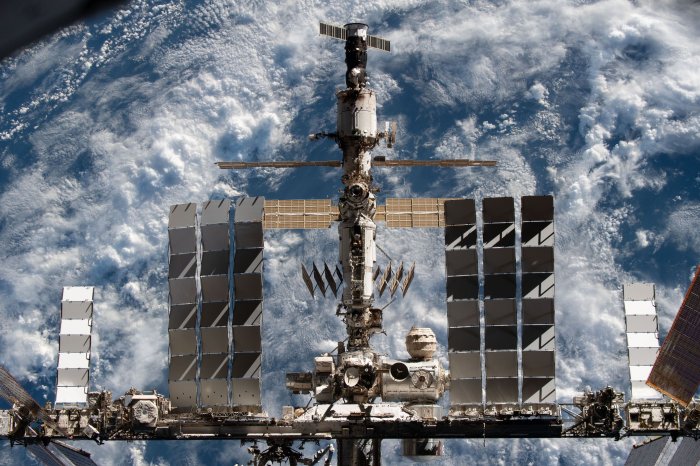1 of 3 | An illustration depicts infrared lasers beaming data to a ground station from space at speeds many times faster that radio waves. Image courtesy of NASA
ORLANDO, Fla., June 9 (UPI) -- New space missions being launched this summer will attempt to revolutionize space communications by using laser beams to quickly transmit large amounts of data, including high-definition video from the moon.
Two missions by the U.S. government will test such lasers, which use invisible, infrared light beams.
NASA's Laser Communications Relay Demonstration will explore the best ways to beam information to the Earth from orbit using lasers. And a separate demonstration for the Department of Defense, known as LINCS, will focus on beaming laser communications between two small satellites.
Also, NASA's Orion spacecraft being prepared for launch later this year on an uncrewed lunar mission will use lasers on future missions to send high-definition video of the moon back to Earth.
The main goal for NASA's laser demonstration spacecraft is to determine how Earth's atmosphere, especially clouds, influences laser links to the surface, David Israel, NASA architect for exploration and space communications, said in an interview.
The lasers will allow "a whole day's worth of video or observation data to just be blasted down in one quick pass," Israel said.
Israel worked on a new $310 million mission. Scheduled for launch this summer, the spacecraft consists of receivers and a laser transmitter and is no bigger than a king-sized mattress, according to NASA.
Launch provider ULA postponed a June 23 target date to evaluate an issue with the rocket's engines and hasn't yet set a new date.
The relay demonstration satellite will orbit the Earth for years, eventually testing the transmission of large amounts of data from the International Space Station to ground stations in Hawaii and New Mexico, Israel said.
If clouds are too thick at the intended ground station, laser transmitters could be adjusted to find other receivers, he said.
"We have models and predictions, but we don't have much in the way of actual data to really characterize how bad the effects of weather will be," Israel said. "We will measure the impact of weather so we can better predict good transmission conditions."
The light beams of infrared lasers travel no faster than radio waves, but lasers can pack 10 to 100 times more data into a relatively quick beam. Such density would allow transmission of maps for the entire surface of Mars in about nine days, compared to nine months for radio waves, NASA said.
Laser communications will aid a new era of spaceflight for private companies, such as SpaceX and Blue Origin, said Debra Emmons, general manager of communications technologies and engineering at the non-profit, California-based Aerospace Corp., a think tank for the U.S. defense department.
"The ability to communicate and operate interchangeably between space assets will be critical ... as we set sights to the moon and beyond," Emmons said in an email.
"The sheer distances require laser-based communication -- not for speed, but for smaller size, weight, and power of optical terminal payloads compared to larger radio frequency [equipment]."
Laser communication is more secure than radio transmission due to the tighter, narrow beam of data, Emmons said.
"The chances of intercepting a laser beam are much smaller," she said. "One has to be in the path of a laser beam to intercept any data, whereas radio waves scatter, and therefore can be intercepted more easily."
The study of such lasers is expanding rapidly, Peter Delfyett, professor of physics, optics and photonics at the University of Central Florida, said in an interview.
"We're talking about massive amounts of information to be transmitted quickly, within a few seconds or minutes," Delfyett said.
He compared laser communications to fiber-optics on the ground, without the use of fiber.
Infrared lasers carry no significant risk to people in most circumstances and would not be visible unless someone was wearing infrared goggles, Delfyett said.
The public may witness the improvements in communication, thanks to lasers, when NASA sends Artemis missions to the moon, NASA's Israel said.
"When that first flyby of the moon happens and high-definition video is streaming back, that'll be coming through an optical [laser] link," he said.
The International Space Station is pictured from the SpaceX Crew Dragon Endeavour during a flyaround of the orbiting lab that took place following its undocking from the Harmony module’s space-facing port on November 8. Photo courtesy of NASA
















